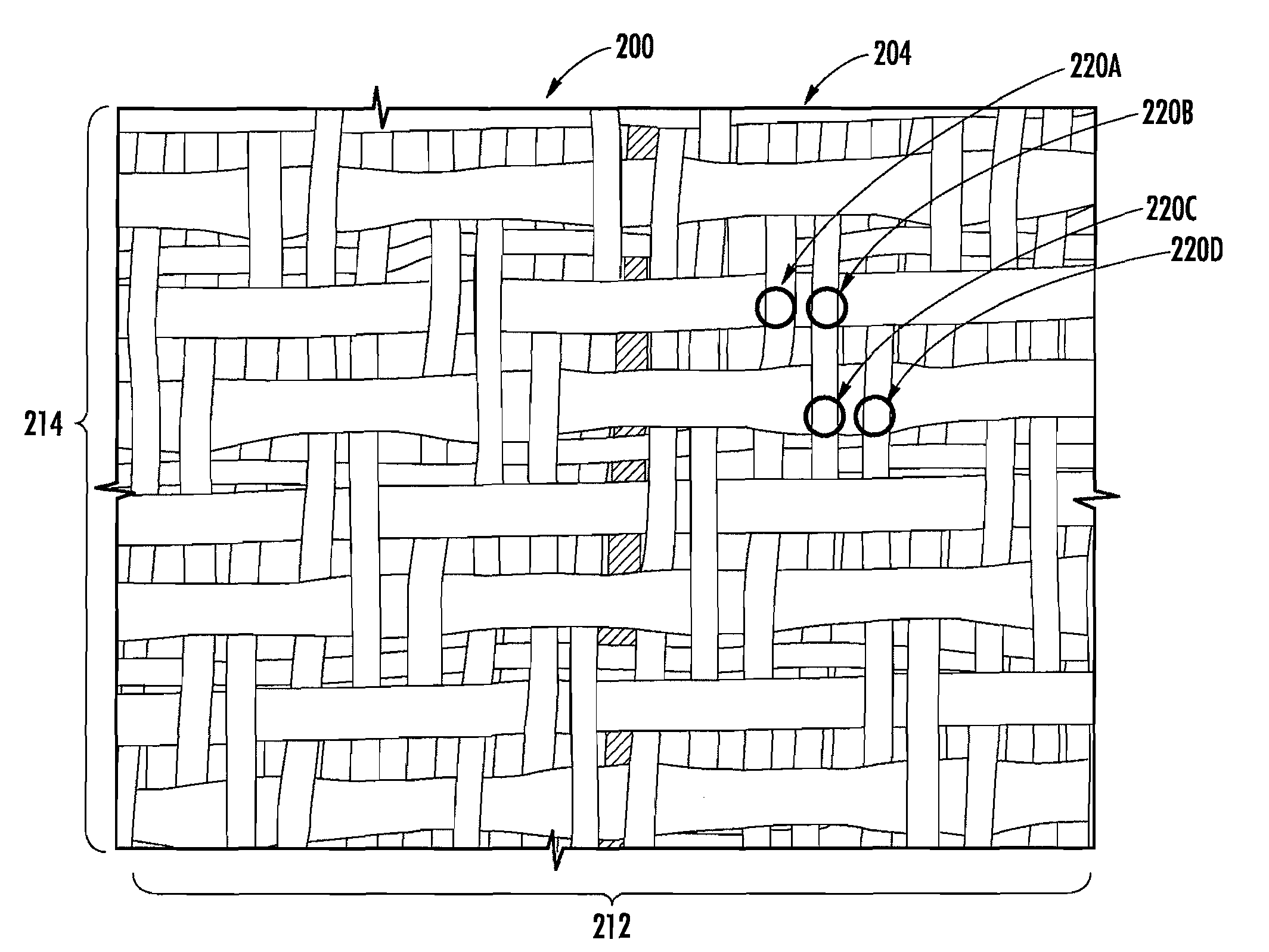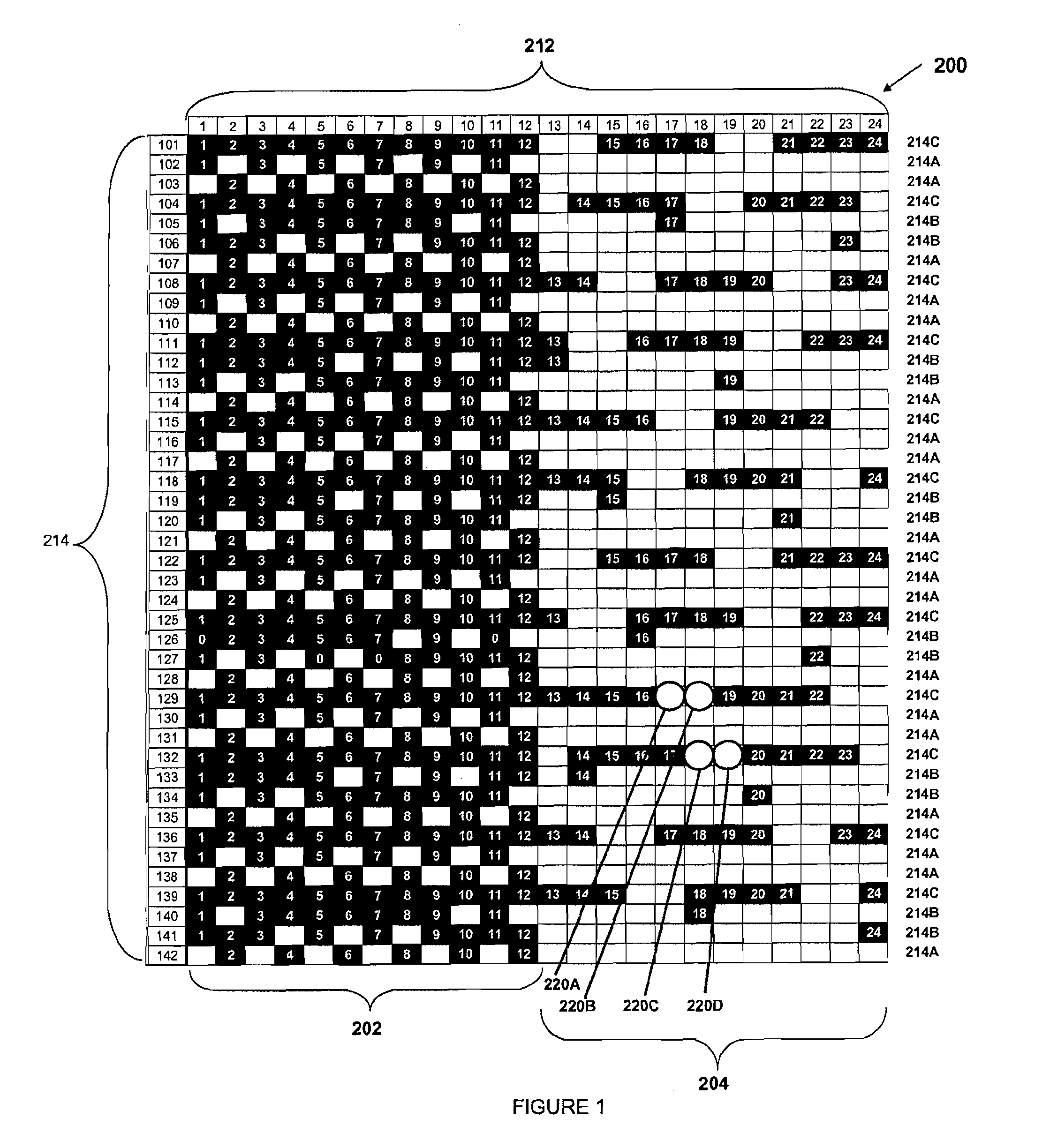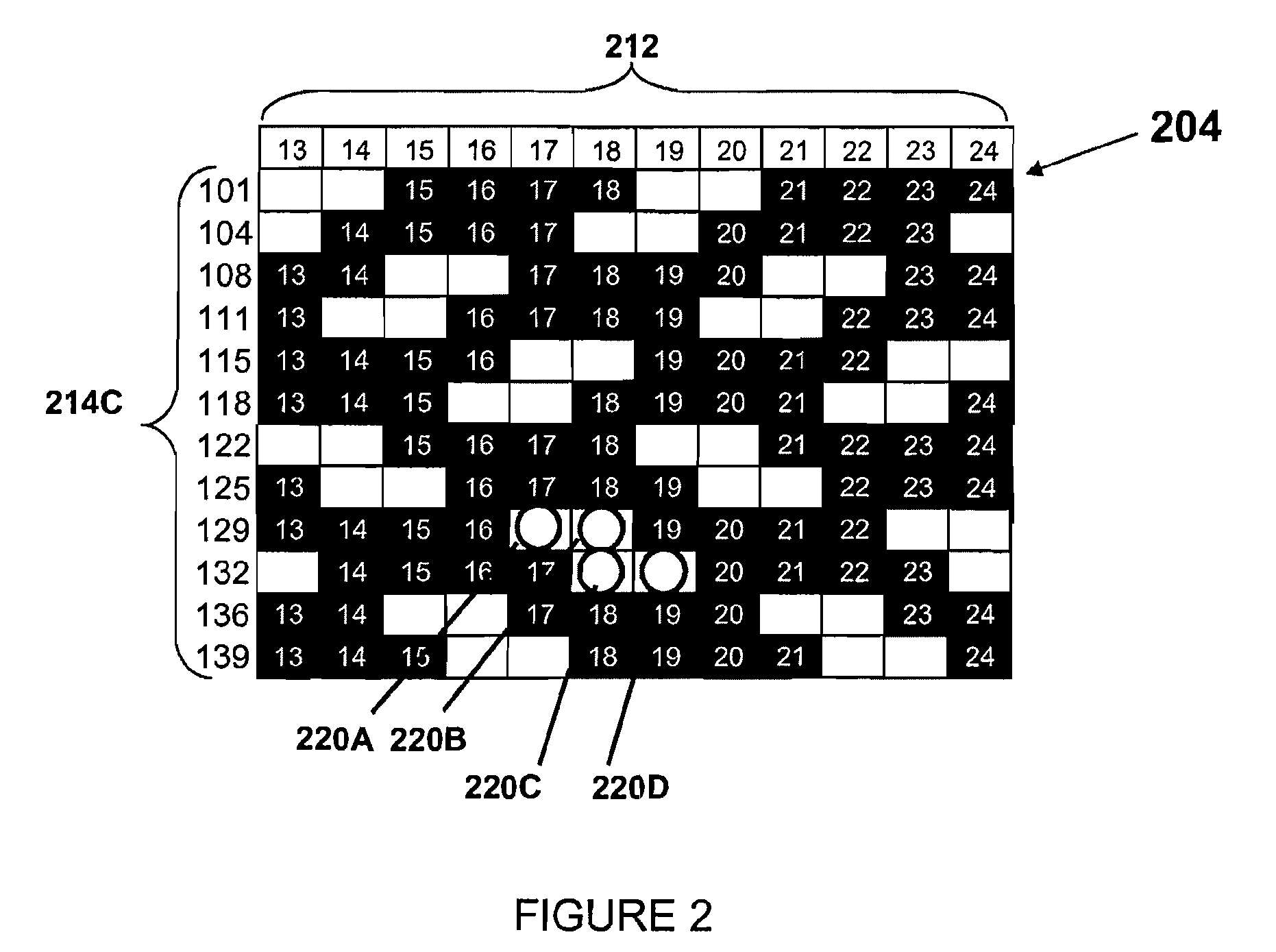Machine side layer weave design for composite forming fabrics
a technology of composite forming fabrics and machine side layers, applied in the field of woven and composite forming fabrics, can solve the problems of near 2.0 curl test values considered unacceptable, and achieve the effects of less curling, increased weft wear plane, and increased fabric wear resistance and “intensity"
- Summary
- Abstract
- Description
- Claims
- Application Information
AI Technical Summary
Benefits of technology
Problems solved by technology
Method used
Image
Examples
Embodiment Construction
[0041]Certain terminology is used in the following description for convenience only and is not considered limiting. Words such as “up”, “down”, “top”, and “bottom” designate direction in the drawings to which reference is made. This terminology includes the words specifically noted above, derivatives thereof and words of similar input. Additionally, the terms “a” and“one” are defined as including one or more of the referenced data unless specifically noted. The term “crimp” is defined as the bend in the yarns formed by the interweaving of each warp and weft yarn. A “double warp knuckle” is the adjacent knuckle formations caused by a warp yarn passing (or being crimped) under two adjacent weft yarns in the fabric weave structure. A “single warp knuckle” is the knuckle formation caused by a warp yarn passing or being crimped under a single weft yarn, or also refers to each of the adjacent knuckle formations of a double warp knuckle. “Yarns” refers to monofilaments, multi-filaments, tw...
PUM
 Login to View More
Login to View More Abstract
Description
Claims
Application Information
 Login to View More
Login to View More - Generate Ideas
- Intellectual Property
- Life Sciences
- Materials
- Tech Scout
- Unparalleled Data Quality
- Higher Quality Content
- 60% Fewer Hallucinations
Browse by: Latest US Patents, China's latest patents, Technical Efficacy Thesaurus, Application Domain, Technology Topic, Popular Technical Reports.
© 2025 PatSnap. All rights reserved.Legal|Privacy policy|Modern Slavery Act Transparency Statement|Sitemap|About US| Contact US: help@patsnap.com



